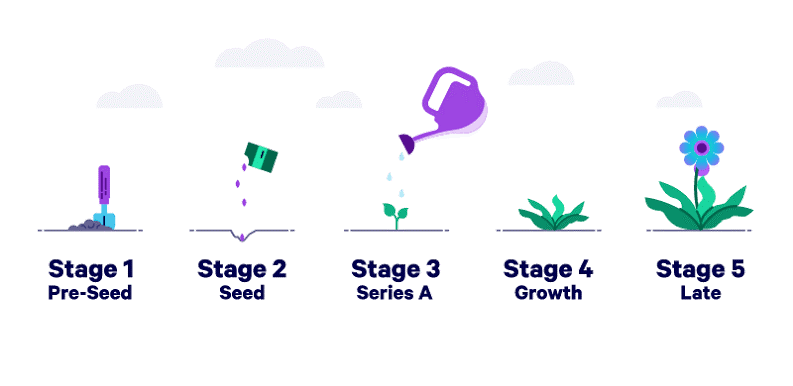The startup stages of growth serve as a roadmap for new enterprises, from their inception as a concept to their potential development into a sizable and prosperous corporation. There are several apparent risks to being an entrepreneur, and nearly all of them are challenging to anticipate or overcome.
Each stage focuses on a different element to aid in developing a new firm. Understanding the process can be helpful when considering starting a new company. A lack of clarity regarding your startup’s direction can cause financial problems.
To avoid losing your business, you must understand the main points of the starting phases to determine when it is appropriate to raise money. If you’re considering establishing a startup, this article is for you. Join us as this article discusses the growth stages of a startup company.
What is a startup company?
A startup firm is a business that is typically just starting. These entrepreneurial initiatives are frequently started by 1-4 business owners that focus on developing a commercial solution to a recognized market need.
70% of startups obtain venture capital through an investor or apply for a loan to help fund their new company. Regardless, during the initial stages of operation, startups are typically self-funded by the founding team. However, support for startups varies depending on the stage of their growth. Let’s examine them more closely.
The Growth Stages of Your Startup Company
1. Pre-seed Stage
Every business venture begins with an idea. It’s a cornerstone of every business. These ideas can come from brainstorming with your friends or coworkers or when you least expect them. But regrettably, not all “great designs” are original or creative.
A business is a concept or idea that has yet to be implemented in the pre-seed stage. In this stage of development, people look for outside input to see whether their ideas can become a reality. Research them to determine whether your target market genuinely needs your product or service.
If there is potential competition, consider if there are comparable items already on the market, and if so, choose areas to fill the need. At this stage of the company formation process, the founders fund the business and operate it alone or with a small group of people.
2. Seed Stage
After you’ve completed your study and established the foundation for your startup, it’s time to sow the seed that will grow into your company.
You can compare the “seed” funding to planting a tree. The ideal “seed” that will aid in the growth of the business is this early financial support. The company will hopefully eventually grow into a “tree” if there is enough revenue, a good business plan, as well as the tenacity and commitment of investors.
Raising capital for your firm officially starts at this stage. And that’s important because even the best concept your sector has ever seen is only helpful if you have the money to support it. With over 40% of firms failing due to cash issues, the most common reason for failure is running out of money or failing to acquire new financing.
You now have a minimally viable product (MVP), and your goal is to develop it into a finished product that can be sold. To improve your product-market fit, you’ll also require financial backing for marketing strategies, personnel decisions for critical positions, and additional market research. Consider this to be your startup’s development stage.
3. Early Stage
When a product is already on the market and customers start to purchase it, a startup company expands. Advances are beginning, even though the growth is still relatively young. There may be an addition of new staff members to meet these additional challenges.
For a startup, it’s crucial to create a product after gathering feedback. In this stage, one of the most vital duties is identifying the essential features or functions and forming the first connections or future business agreements.
The business model, on the other hand, emerges when the initial benefits do. You will need a financial boost, which typically comes from funds and investors specializing in this stage of the company’s life cycle.
4. Growth Stage
A startup has progressed to the point where it has a regular customer base and a reliable source of money during the growth stage. The company’s cash flow starts to increase quickly at this point. A company may begin to hire extra staff at this point to help handle the increased workload due to its expansion. Your company now has a well-honed marketing budget and a distinct business model.
5. Expansion Stage
When the company has been established, it is time to move and expand into new markets and market segments. There needs to be a precise and calculated plan since the situation is so fragile. The error probability is higher.
Greater financial support is needed for this stage. With company funds, it may be done through investment. It is also simpler to complete this process if agreements are obtained with giant corporations already well-established in different nations or sectors.
6. Exit Stage
This period is optional, and startups do not necessarily participate in it. A high-value and long-term corporation is the aim of some business models. The final stage is typically to perform an exit by selling the startup. Even yet, a small percentage of people reach this point, and those who do are distinguished by their fortitude, high potential, and chances to develop further.
The selling of the founders’ shares to another company, its purchase by another company, or its introduction into the sale market, known as an “Initial Public Offering” (IPO), are three often used ways for this output to happen.
Read More: 5 Health Benefits Of Copper Range Hoods
